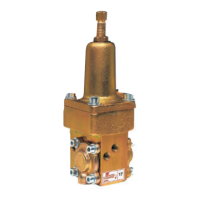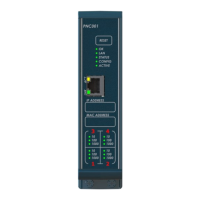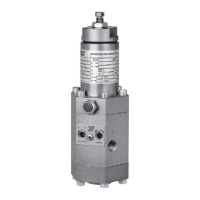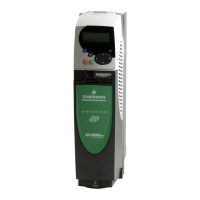changing conditions, and so the Motor Protection Accumulator (04.019) is given by the following equation.
T = Percentage Losses x [(1 − K
2
) (1 − e
-t/τ1
) + K
2
(1 − e
-t/τ2
)]
where
T = Motor Protection Accumulator (04.019)
K
2
= Motor Thermal Time Constant 2 Scaling (04.038) / 100%
τ1 = Motor Thermal Time Constant 1 (04.015)
τ2 = Motor Thermal Time Constant 2 (04.037)
[(1 − K
2
) (1 − e
-t/τ1
) + K
2
(1 − e
-t/τ2
)] gives the effects of the thermal time constants in the motor. K
2
defines the ratio of the contribution to
the Motor Protection Accumulator (04.019) value from each of the time constants. If K
2
is set to its default value of 0 then
only Motor Thermal Time Constant 1 (04.015) is included and the model will give the temperature of the main mass of the motor body. To give better
protection to the motor, the model can be used to model a particular point in the motor, for example the stator windings. This can be done by including
an additional shorter time constant representing the thermal impedance between the windings and the main mass of the motor body which can be
modelled with Motor Thermal Time Constant 2 (04.037).
Reduced cooling with lower speed
If Rated Current (05.007) ≤ Maximum Heavy Duty Rating (11.032) then K
1
is defined as shown below. If Low Speed Thermal Protection Mode (04.025)
= 0 the characteristic is intended for a motor which can operate at rated current over the whole speed range. Induction motors with this type of
characteristic normally have forced cooling. If Low Speed Thermal Protection Mode (04.025) = 1 the characteristic is intended for motors where the
cooling effect of motor fan reduces with reduced motor speed below half of rated speed. The maximum value for K
1
is 1.05, so that above the knee of
the characteristics the motor can operate continuously up to 105% of rated current.
If Rated Current (05.007) > Maximum Heavy Duty Rating (11.032) then K
1
is defined as shown below. Two different characteristics are provided, but in
both cases the motor performance is limited at lower speeds and the permissible overload is reduced from 105% to 101%.
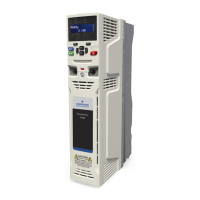
